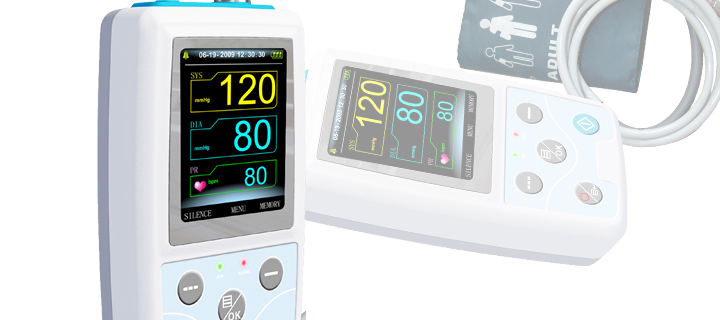24-Hours Ambulatory Blood Pressure Monitoring
24-hour ambulatory blood pressure monitoring is a method to measure blood pressure on a continuous basis. Determining what kind of hypertension a patient has can ensure better options for treatment.
What is 24-hours ambulatory blood pressure monitoring?

Twenty-four-hour ambulatory blood pressure monitoring is a way of measuring and managing high blood pressure (hypertension). Hypertension is a blood pressure measurement in which the systolic (upper) blood pressure is at or above 140 and the diastolic (lower) blood pressure is at or above 90.
Ambulatory blood pressure monitoring allows many blood pressure (BP) readings to be recorded over a 24-hour period, whether the patient is awake or asleep.
In most cases, with ambulatory BP monitors, readings are taken every 20 to 30 minutes during the day and every hour at night. The heart rate can also be measured at the same time.
Multiple BP readings can be averaged over the 24-hour period to obtain the mean or average BP. Variations in BP and heart rate, the BP distribution pattern, and other statistics can be calculated.
Ambulatory BP monitoring can also help to predict the likelihood of cardiovascular (blood vessels in the heart) and cerebrovascular (blood vessels in the brain) disease linked to hypertension and organ damage.
Ambulatory BP monitoring may also be suitable in other situations, such as for:
- Pregnant women with hypertension
- Patients with “borderline” hypertension
- Difficulty controlling BP with medication
- BP changes due to other drugs
- Changes in prescription medications that may impact BP
- Fainting episodes or hypotension (low BP)
“The secret of health for both mind and body is not to mourn for the past, not to worry about the future, or not to anticipate troubles, but to live the present moment wisely and earnestly.”
BUDDHA


